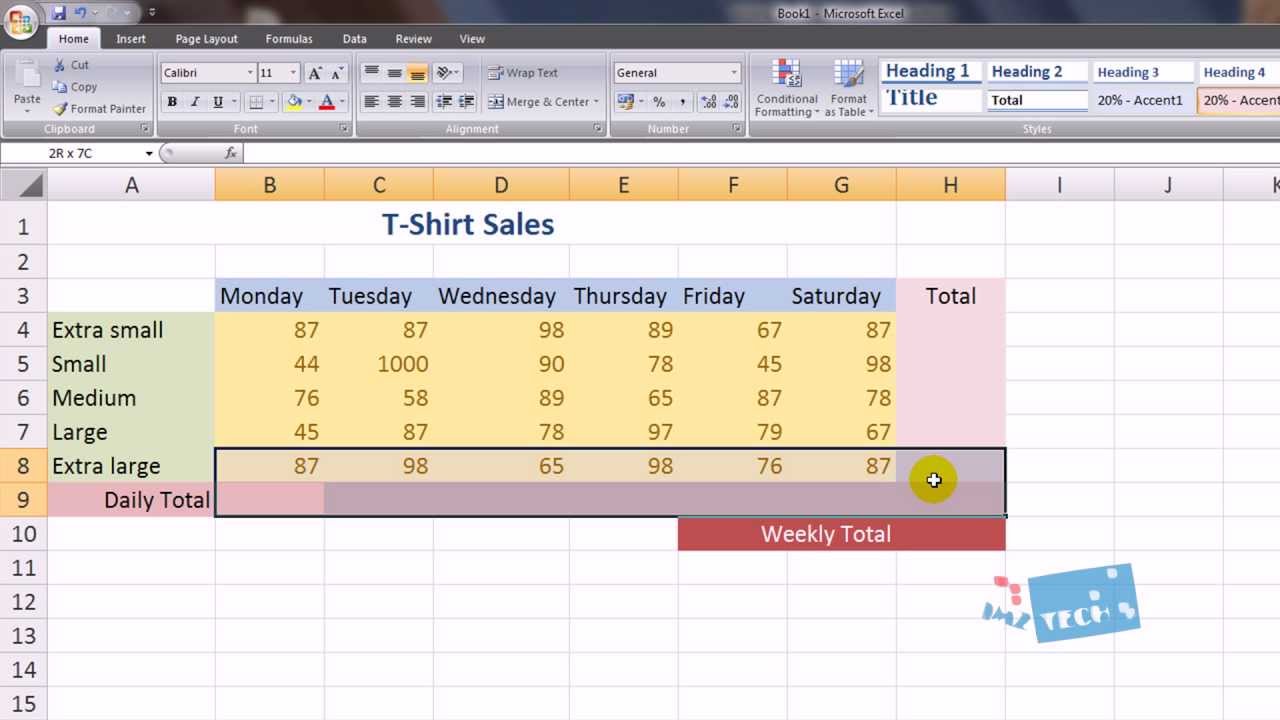5 Simple Tips for Time Sheets in Excel 2010

Managing time effectively is crucial, whether you're running a small business, freelancing, or working within a large organization. Excel 2010 offers a versatile platform for tracking and managing time through time sheets. Here, we'll delve into 5 simple tips for creating effective time sheets in Excel 2010, ensuring your time management is both efficient and user-friendly.
1. Structure Your Time Sheet

Before diving into the specifics, ensure your time sheet has a clear structure. Here’s how to set it up:
- Column Headers: Date, Task, Start Time, End Time, Duration, and Notes.
- Format Date and Time: Right-click on the header cells and select “Format Cells” to set appropriate date and time formats.
- Use Drop-down Lists: For tasks or employee names, employ data validation to create dropdowns, preventing typographical errors.
Create a visually appealing and functional time sheet by:
| Date | Task | Start Time | End Time | Duration | Notes |
|---|---|---|---|---|---|
| 11/15/2023 | Project Meeting | 9:00 AM | 10:30 AM | 1.5 hours | Discussed project phases and deadlines. |
| 11/16/2023 | Development | 10:45 AM | 1:15 PM | 2.5 hours | Created and tested new modules. |

2. Use Formulas for Automatic Calculations

Excel shines when it comes to automating calculations. Here are some formulas you can use:
- Calculate Duration: Use the formula
=TEXT(END_TIME-START_TIME,“h:mm”)to calculate the duration of each task automatically. - Sum Time: Add up hours across different days or weeks with
=SUM(TIME_CELLS_RANGE).
⚠️ Note: Ensure all your time entries are in the 24-hour format to prevent errors in calculations.
3. Utilize Conditional Formatting

Conditional formatting can help you quickly identify data trends and time entries:
- Apply color scales to indicate when tasks exceed expected time limits.
- Use icon sets to mark completed tasks or highlight overtime hours.
Here’s how you can set up conditional formatting:
- Select the cells you want to format.
- Go to “Home” > “Conditional Formatting.”
- Choose “New Rule” and set your conditions.
4. Enhance Your Time Sheet with Data Validation

Data validation ensures data integrity and ease of use:
- Limit entries in certain columns (e.g., time) to prevent data entry errors.
- Set up dropdown lists for recurring tasks or employee names.
Here’s a simple way to add data validation:
- Select a cell or range.
- Go to “Data” > “Data Validation.”
- Set your validation criteria.
5. Backup and Share Your Time Sheets

Time sheets are valuable documents, and safeguarding them is essential:
- Back Up: Regularly save your Excel file to cloud storage or a secure server.
- Share: Use Excel’s collaboration features or convert to PDF for sharing.
Here are some best practices:
- Schedule automatic backups using Excel’s options or external tools.
- Enable track changes for transparency when multiple users are editing.
Wrapping up, by implementing these 5 simple tips for time sheets in Excel 2010, you can significantly improve your time tracking process. Structured layouts, automated calculations, conditional formatting, data validation, and proper sharing and backup strategies all contribute to a more effective and reliable time management system. Remember, the key is not just tracking time but doing so in a way that adds value to your work processes and helps in better decision-making.
What is the advantage of using Excel 2010 for time sheets?

+
Excel 2010 offers powerful data management, calculation, and reporting tools, making it an excellent choice for creating flexible, customized time sheets. It provides features like conditional formatting, data validation, and sharing options that enhance time tracking efficiency.
How often should I backup my time sheets?

+
Ideally, you should back up your time sheets at least daily, especially if multiple users are contributing to the document. Automating this process ensures you never lose important data.
Can time sheets in Excel 2010 be used for payroll?

+
Yes, time sheets in Excel can be set up to help with payroll by calculating total hours worked, overtime, and other necessary data. However, ensure accuracy in data entry and consider integrating with payroll software for more streamlined processes.
What if I need to share my time sheet with others who don’t have Excel 2010?

+
You can save or export your Excel document as a PDF to ensure compatibility across different platforms, or share it via online platforms that support collaboration on Excel files, like Google Drive or OneDrive.